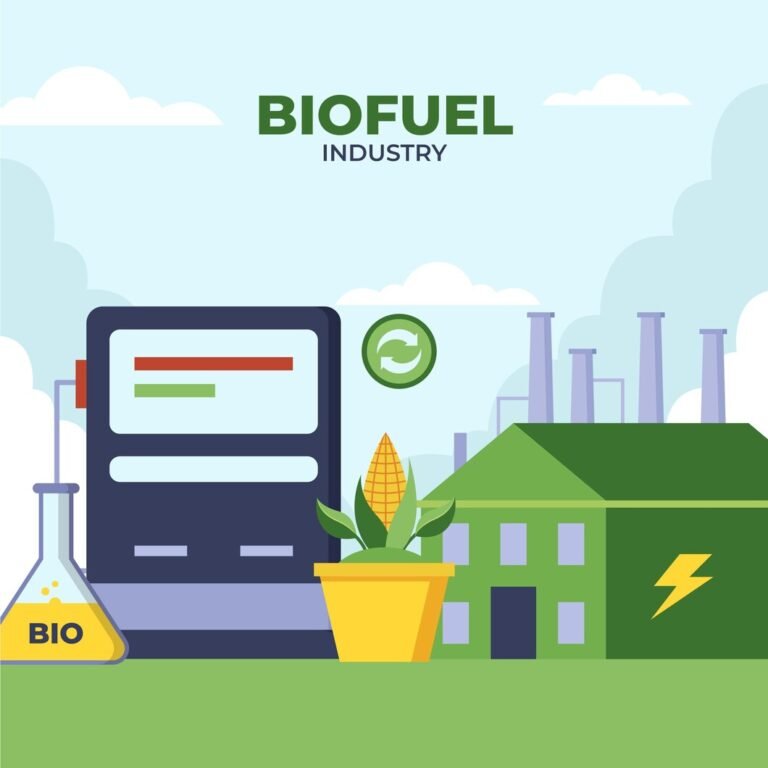China Builds the World’s Largest Pure-Hydrogen Power Project
China has embarked on constructing what promises to be the world’s largest pure-hydrogen power project. The breakthrough involves deploying a 30-megawatt turbine—known as the Jupiter-1—that runs exclusively on hydrogen, making it entirely carbon-free. This turbine is being installed in Inner Mongolia as part of a renewable energy storage demonstration initiative. The project marks China’s most advanced effort in hydrogen-powered electricity generation using combustion turbines.
In July 2025, Mingyang Hydrogen Energy, a subsidiary of Mingyang Smart Energy, shipped the Jupiter-1 turbine from Wuxi, Jiangsu Province, to Etuoke Banner in Ordos City, Inner Mongolia. The unit will be integral to a hydrogen energy storage demonstration co-located with a 500 MW wind power plant and a synthetic ammonia facility producing 150,000 tons annually. It establishes a complete “electricity-to-hydrogen-to-electricity” cycle, bolstering renewable integration and offering flexible, cross-time-scale energy storage.
This is not theoretical. Heating and cooling curves, hydrogen combustion controls, and grid balancing demands are being tested in real time. According to Hydrogen Insight News, the turbine is being installed in a renewable energy storage demonstration in Inner Mongolia.

Engineering Triumph: Innovation on a Massive Scale
Bringing a 30 MW-capacity pure hydrogen turbine to life demanded solving immense technical and engineering challenges. Hydrogen’s properties—high flame speed, back-firing tendencies, and pressure instability—make it notoriously difficult to handle in combustion turbines. Mingyang’s team tackled these by designing a micro-premixed combustion chamber with a sophisticated aerodynamic and thermal structure. They claim to have overcome oscillation, backfire and emission issues through patented combustion design and control technologies..
To visualise the scale, The Economic Times reports that the Jupiter-1 consumes around 443.45 tons of hydrogen per hour across ten combustion chambers. By contrast, the infamous Hindenburg airship carried only about 18 tons of hydrogen, meaning the Jupiter-1 could fill it 25 times over every hour.
Beyond statistics, there’s a concrete impact. The turbine will be tested in a real industrial park that integrates hydrogen production by electrolysis, storage in spherical tanks (12 tanks, totalling 48,000 Nm³ per hour of H₂ production capacity), and electricity generation—all linked to renewable wind power. The site will thus validate hydrogen’s role in smoothing out renewable energy curtailment, when excess wind or solar output is wasted because the grid cannot absorb it.
An industry expert, Wang Yongzhi, general manager of Mingyang Hydrogen Gas Turbine Technology, said that the plant enables a carbon-free “power-to-hydrogen-back-to-power” process and offers greater grid stability to support projects with millions of kilowatts of wind and solar capacity.
From Demonstration to Global Blueprint: What This Means for Energy Transition
What makes this project especially significant is its implications for energy systems worldwide. China has long grappled with renewable energy curtailment, estimated as high as 25% in some regions, where wind and solar output go unused because of grid limitations.
A real-world comparison: In 2022, China spent about $546 billion on clean energy infrastructure, roughly half of global investment. Yet much of the resulting renewable power lies far from consumption centres. Having a flexible, hydrogen-based storage and generation system in the mix could radically change this equation.
Furthermore, alongside this pure-hydrogen turbine, China is pushing broader hydrogen and ammonia developments. For example, Envision Energy commissioned the world’s largest green hydrogen and ammonia plant in Chifeng, Inner Mongolia. Powered entirely by off-grid wind and solar and managed by AI, it produces 320,000 tons of green ammonia annually, with plans to scale to 1.5 million tons by 2028.
Between these pioneering projects—one focused on hydrogen-powered electricity, the other on green hydrogen-derived chemicals—China is crafting a blueprint for integrated clean energy systems. These projects showcase how renewables, hydrogen, artificial intelligence, and sector coupling (power-to-chemicals) can combine to deliver decarbonization at scale.
The statistics reflect the momentum: In the first quarter of 2025, China generated a record 951 TWh of clean power, with wind and solar leading the surge. Solar generation rose 48% compared with the previous year, and renewable energy now accounts for nearly 39% of the country’s electricity mix.
Actionable Lessons for Policymakers, Investors, and Engineers
As the project moves from demonstration toward full deployment, here are key lessons and recommendations for stakeholders aiming to replicate or build on China’s model:
1. Prioritise integrated systems over siloed initiatives. China’s approach combines hydrogen production, storage, electricity generation, and industrial offtake (ammonia production) in one digital-managed eco-system. This avoids fragmented investments and maximises efficiency.
2. Solve technical challenges head-on. Pure hydrogen turbines are no longer theoretical. Mingyang’s success in solving combustion instability, safety issues, and emissions challenges shows that technology readiness can leap forward with focused R&D and engineering investment.
3. Target renewable curtailment hotspots. Areas with high wind and solar generation but low grid flexibility are ideal testbeds, such as western and northern China. Demonstrating hydrogen storage there tackles the hardest use case first
4. Harness AI and digital tools. The Envision project’s AI-driven balancing of electrolysers, renewables, storage, and chemical outputs illustrates how smart control systems can optimise renewables for reliability and profitability.
5. Design for scale and replication. Both the Inner Mongolia turbine project and Envision’s industrial park are modular and intended for rapid expansion or export. Replicable design accelerates clean energy adoption globally.
6. Engage cross-sector and cross-value chain partnerships. Mingyang’s turbine was co-developed with multiple research institutes. Envision’s project ties into industrial ammonia markets. Cross-industry collaboration leverages expertise and markets.
Learn More: Pros and Cons of Green Hydrogen
Conclusion
China’s launch of the world’s largest pure-hydrogen power project represents an inflexion point in clean energy innovation. Grounded in real-world scale, cutting-edge engineering, and full-system integration, it breaks new ground beyond lab prototypes. Supported by parallel advances in green hydrogen and AI-managed systems, China is shaping a compelling template for how nations can leverage hydrogen to overcome renewable energy’s intermittency, accelerate decarbonization, and build resilient energy infrastructure.
For policymakers, investors, and engineers, the lesson is clear: transition at scale demands bold, coordinated action—combining technology, policy, cross-sector collaboration and smart design. The Inner Mongolia and Chifeng projects are not just developments—they are signals of a rapidly evolving global energy landscape where hydrogen bridges the gaps between energy sources, storage needs, and industrial demand.







